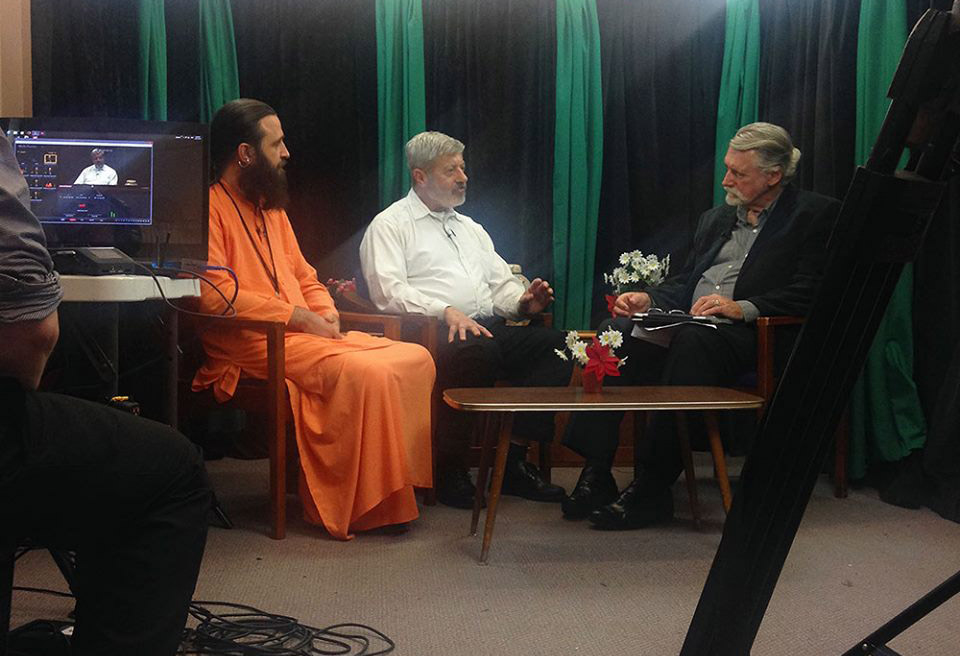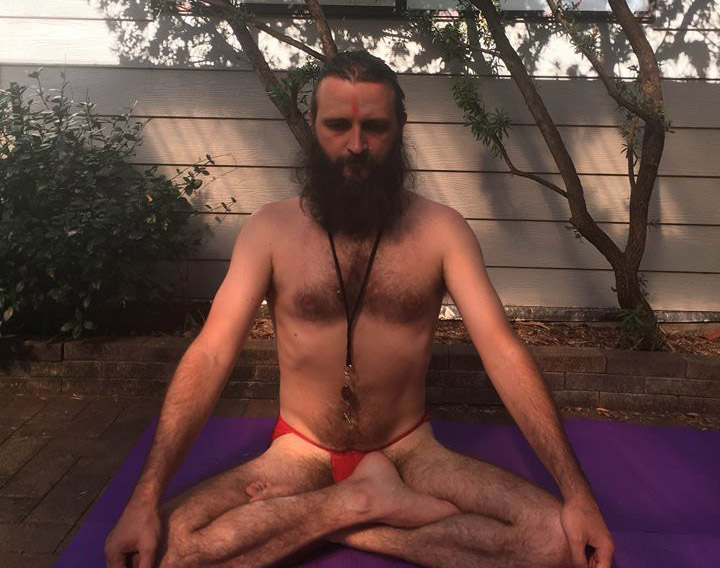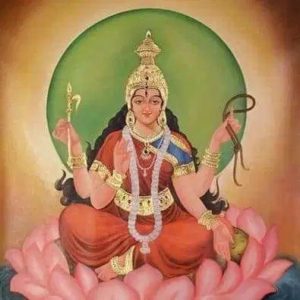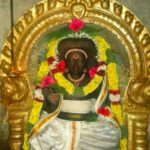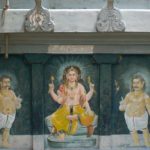This practise you can see in the Śiva Samhitā:
मूलाधारेस्ति यत्पद्य चतुर्दलसमन्वितम् तन्मध्ये वावभव बीजं विस्फुरन्तं तडित्यथम् || १९० ||
हृदये कामबीजंतु कधूककुसुमप्रभम् आज्ञारविन्दे शक्त्याख्य चन्द्रकोटिसमप्रभम्
बीजत्रयमिदं गोप्यं भुक्तिमुक्तिफलप्रदम् एतन्मन्त्रत्रयं योगी साधयेत्सिद्धिसाधकः || १९१ ||
mūlādhāresti yatpadya caturdalasamanvitam
tanmadhye vāvabhava bījaṃ visphurantaṃ taḍityatham ॥190॥
hṛdaye kāmabījaṃtu kadhūkakusumaprabham
ājñāravinde śaktyākhya candrakoṭisamaprabham
bījatrayamidaṃ gopyaṃ bhuktimuktiphalapradam
etanmantratrayaṃ yogī sādhayetsiddhisādhakaḥ ॥191॥
One needs to contemplate vāgbhava-bīja (in Śrīvidyā, it is bīja aiṃ ऐं) in the center of the four-petalled lotus (mūlādhāra), like the trembling light of lightning (vispurana). In the heart (anāhata-cakra) there is kāma–bīja (known as klīṃ क्लीं in Śrīvidyā), it is similar to a bandhuk flower (in India it is associated with passion). In the lotus of the ājñā-cakra, there is śakti–bīja (in Śrīvidyā they call it sauḥ सौः), it is like ten million moons (candrakoṭisamaprabha). This secret mantra bestows fruit both in the form of spiritual liberation and enjoyment. A yogin must diligently practice these three mantras.
Based on that, some people conclude that this is not a text of the Nāthas, but rather the vedantic one, belonging to the tradition of Śrīvidyā. But I don’t think so, the text could well belong to Nāthas. Because, one of the initiations in the Nātha-sampradāya, known as upadeśī-dīkṣā, implies the worship of the Goddess Bālāsundarī. To begin with, I will give you Her śabar-mantra with my translation. Pay attention to the description of the Goddess:
सत नमो आदेश | गुरूजी को आदेश | ॐ गुरुजी | सों अलिय कलिय तारा त्रिपुरा तोतला |
बायें हाथ पुस्तक दायें हाथ माला | जपो तपो श्री सुन्दरी बाला , जीव पिण्ड का तुम रखवाला इतना योगमाया स्वरूप उपदेशी मन्त्र सम्पूर्ण भया | श्री नाथजी गुरुजी को आदेश आदेश आदेश ||
sat namo ādeś | gurūjī ko ādeś | oṃ gurujī | soṃ aliya kaliya tārā tripurā totalā |
bāyeṃ hāth pustak dāyeṃ hāth mālā | japo tapo śrī sundarī bālā, jīv piṇḍ kā tum rakhvālā
itnā yogamāyā svarūp upadeśī mantr sampūrṇ bhayā | śrī nāthjī gurujī ko ādeś ādeś ādeś |
We pay respect to the highest being (truth), let there be its will (ādeś). Let there be the will of Guruji, with all respect to Guruji. Soṃ is the expression of the Goddess of Speech (aliya), Kālī (kaliya), Tārā (tārā), Tripurā (tripurā). She holds a scripture in her left hand, and japa-mala in her right. So (itnā) it was your (tum),Śrī Bālāsundarī (śrī bālā sundarī), in the form of the nature of yoga (yogamāyā svarūp), complete repetition (japa) and spiritual effort (tapas) of the upadeśī–mantra (upadeśī mantr sampūrṇ bhayā) in the form of a living soul, located inside the body (jīv piṇḍ kā rakhvālā). Let there be the will (blessing) of the respected Śrī Guru Nāth (śrī nāthjī gurujī ko ādeś).
It describes exactly the same image of the Goddess Bālā, which is worshipped in the Tradition of Śrīvidyā. We can argue about the varieties of syllables, the differences between Saṃskṛt mantras and Śabar mantras. But, that is the same as, for instance, we confidently say that Gorakṣa–gāyatrī is not Gāyatrī, because it does not correspond to the metric size, as there are no 24 syllables in it. Or, to argue about the fact that it is not right to consider the Gāyatrī mantra as so-ham. However, if you thoroughly study the topic of metric sizes, you will see that each metric size has many variations. One chandas can have variations with different numbers of akṣaras. On the other hand, Bālā is not limited to three bījas; there are combinations of six, nine, and even sixteen (ṣoḍaśī). Her bījas are parts of the Mahaṣoḍaśī mantra, inside of which there is the pañcadaśī or ṣoḍaśī (mantra) from kādi, hādi and sādi kūṭakṣaras, with the addition of śrīṃ, and also praṇava Om. In fact, the mantra of Tripura Bhairavī is also derived from the mantra of Bālā, in which bījas ha, sa and ra are added. The former is the essence of the Śrī Yantra, and also the form of Kālī. For that reason, virtually all the main mantras of Śrīvidyā are derived from Bālā. In general, Tripura Sundarī in tantrism is the Goddess of ūrdhvāmnāya, oriented on the ideals of mokṣa, the main goal in yoga.
I propose to analyse the shorter śabar-mantra of Bālā from the Nātha-Sampradāya:
The Nātha-mantra of Yoga Māyā Bālā:
ॐ सों इलीं क्लीं श्रीं सों श्रीं सुन्दरी बाला नमः ॥
oṁ sōṁ Ilīṁ klīṁ śrīṁ sōṁ śrīṁ sundarī bālā namaḥ ॥
These bījas are slightly transformed versions of the triakṣari, as well as of other mantras of Śrīvidyā (śriṃ, oṃ and sohaṃ) derived from it.
The Śrīvidyā mantra of Bālā:
ऐं क्लीं सौः ॥
aiṁ klīṁ sauḥ ॥
Some are compressed according to the principle of pratyāhāra, some, on the contrary, are expanded. Let’s take a closer look.
The bīja सों soṁ is a combination of सोऽहं so̕haṁ and Parā (Śakti) bīja सौः sauḥ. The bīja इलीं ilīṁ is simply a modified ऐं aiṁ (vāk–bīja), because ऐं aiṁ is nothing more than a sandhyakṣara from अ + ई, although there could be short variants of them. We get ए, then if we again add अ to it, we get ऐ. Just like joining अ + उ, we get ओ, with bindu it will be praṇava ओं, and if we further ‘strengthen’ it, we will get औ, which can be a part of the bīja सौः, called Śakti–bīja and sometimes Parā–bīja. In fact, इलीं could be understood as a compressed form that extends from इ to ल – the last akṣara of the Sanskrit alphabet (mātṝkā), with the exception of the first akṣara अ, from which the entire mātṝkā emerges. The bīja क्लीं klīṁ is the kāma–bīja without modifications. This is just a small analysis of the parallels between the Nāth Tradition and the Śrīvidyā-tantra mantras. Of course, I cannot give out all the secrets of the mantras to those who are not dīkṣita. Nevertheless, even from that one can see a lot of connections and parallels of seemingly different traditions. In my opinion, the situation here is about the same as in Vajrayana, when many siddhas could not really separate themselves from Buddhism and from Nāthism at the same time. But after centuries, the paths diverged. Although, there are fewer differences between Śrīvidyā and Nāthism, since both traditions are theistic and have much in common.
Goddess Bālā is directly related to Gorakṣanāth, because she is young, just like Gorakṣanāth (bal-jati). Both deities are symbols of living energy, opened to everything new, without the weight of worldly affairs etc.

